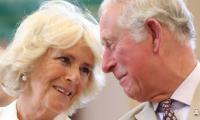Quaid-i-Azam varsity ranked number 1 in HEC ranking
LAHORE
The Quaid-i-Azam University (QAU), Islamabad was ranked number one among top 10 universities and higher education institutions (HEIs) of Pakistan in Higher Education Commission (HEC) ranking issued in February 2016.
The QAU is again in the limelight for being on top in the recent Information Technology University’s Quality Research Ranking (ITU-QRR) in the Broad Institutions category.
The HEC’s ranking criteria carried 100 score in total, 15 for quality assurance, 30 for teaching quality, 41 for research, 10 for finance and facilities and four for social integration/ community development. The QAU had scored 100.
On the other hand, the ITU’s Quality Research Ranking is based on only quality research output of Pakistani universities and for this the Scientometrics Lab of the ITU used Scopus database—“the largest abstract and citation database of peer-reviewed literature: scientific journals, books and conference proceedings.”
The ITU-QRR used University of California, Berkeley (UCB), USA and other foreign universities as international benchmark. The UCB has been ranked as the No 1 with 100 score in the Broad Institutions category. Quaid-i-Azam University has been ranked No 1 in Pakistan in this category. Do you know what its score is? Only 6.25 as compared to the UCB’s 100!
The other ‘top’ ranked universities in this category scored far below than the QAU except COMSATS Institute of Information Technology whose score is 4.56. The score of other varsities/ HEIs as follows University of Agriculture Faisalabad (UAF) 2.61, National University of Sciences and Technology (NUST) 2.59, University of the Punjab 2.25, Pakistan Institute of Engineering and Applied Sciences 2.12, University of Karachi 1.64, University of Engineering and Technology (UET) Lahore 1.55, Government College University (GCU) Lahore 1.46 and the University of Peshawar 1.29.
In the category of the Aga Khan University has been ranked as the ‘top’ university with 6.36 score followed by Pakistan Institute of Nuclear Science and Technology 3.12, Lahore University of Management Sciences (LUMS) 2.79, National Institute for Biotechnology and Genetic Engineering Pakistan 1.83, Ghulam Ishaq Khan Institute of Engineering Sciences and Technology 1.82, NED University of Engineering and Technology 1.56, University of Sindh, Jamshoro 1.47, University of Engineering and Technology (UET) Taxila 1.23, NWFP Agriculture University 1.17 and the University of Arid Agriculture Rawalpindi 1.15.
For the Quality Research Ranking the ITU’s Scientometrics Lab has used 6 years time window i.e. 2009-2014 and according to its criteria an institute/university is considered research active if it has more than 40 publications in a given discipline.
The ITU-QRR defines Broad Institutions as institutes that are research active in more than 10 disciplines while the Specialized Institutions are the ones which are research active between 4 to 10 disciplines.
Besides others, another benchmark used in the latest ranking is Indian Institute of Science (IISc), Bangalore, India and its score, 25.17, is also far higher than any of the Pakistan university/HEI.
Further analysis shows that QAU had a total of 308 publications in computer science out of which 97 (31.49pc) were quality publications against UCB’s 5,437 total publications and 2104 (38.7pc) quality publications. In Physics and Astronomy the QAU had 1,569 total publications out of which 538 (34.29pc) were quality publication unlike UCB’s 10,243 total publications and 6,793 (66.32pc) quality publications.
The leading private university of Pakistan, LUMS had 64 (30.05pc) quality publication out of total 213 publications while in Physics and Astronomy it had only 88 publications out of which a good 47 (53.41pc) were quality publications.
“There is so much talk and discussion about ‘quality research’, or its lack thereof, in our universities in Pakistan. However, there is no objective, quantifiable benchmark to rank the quality of research in Pakistani universities. This ranking provides the first such yardstick for doing that, says ITU Vice Chancellor Dr Umar Saif.
Pakistan's progress depends on the quality of higher education institutions. Our universities need to focus on high-quality, high-impact research which is published in top venues of publication in the world.
Dr Umar Saif adds:“The ITU-QRR is a yardstick to measure exactly that. Unfortunately, if the top research university in the world is rated at 100, the university at the top of the research rankings in Pakistan receives only 6.25 on that scale!”
Nonetheless a comparison of research funding to University of California, Berkeley (UCB) and Quaid-i-Azam University (QAU) highlights a pathetic situation in the local context.
The UCB attracted USD 691.1 million in new research funding in fiscal year 2015 and according to current currency exchange rate this is equal to PKR 72 billion. On the other hand, Higher Education Commission has a meager PKR 2 billion for all the public and private universities/ HEIs of Pakistan through its National Research Programme (NRP).
The UCB on its faculty has as many as 7 Nobel laureates. Pakistan has only one Nobel laureate, Abdus Salam, who won Nobel Prize in Physics in 1979. Comparing topnotch American universities and our local institutes is like comparing apples and organs”, says an HEC official ignoring the fact even Indian Institute of Science had much higher score than all of the Pakistani universities/HEIs ranked.
According to the official, the HEC’s ranking was local and was done keeping in view the ground realities covering not just research but other performance indicators such as quality assurance as followed by international ranking bodies like Times Higher Education (THE) World University Rankings and QS World University Rankings.
HEC Chairperson Dr Mukhtar Ahmed, who is presently in China, talking to The News on phone, said as the commission had recently done comprehensive ranking of the universities there was no need of fresh ranking.
“This might create confusion”, he said, adding:“The HEC ranked the universities adopting 66 parameters.”
Asma Jahangir Conference. — Twitter/FileLAHORE:The Asma Jahangir Legal Aid Cell will be hosting the Asma Jahangir...
This representational image shows Solar panels. — Unsplash/FileLAHORE: Chinese Consul-General Zhao Shirin Thursday...
Participants attend the informative “PhD Scholars workshop arranged by the University of Veterinary & Animal...
Lahore College for Women University Vice Chancellor Prof Dr Shagufta Naz seen in this image. — LAHORE COLLEGE FOR...
Provincial Minister of Specialized Healthcare and Medical Education Khawaja Salman Rafique addresses an event on March...
Punjab Assembly Speaker Muhammad Ahmad Khan addresses media persons in this still on April 25, 2024. —...







